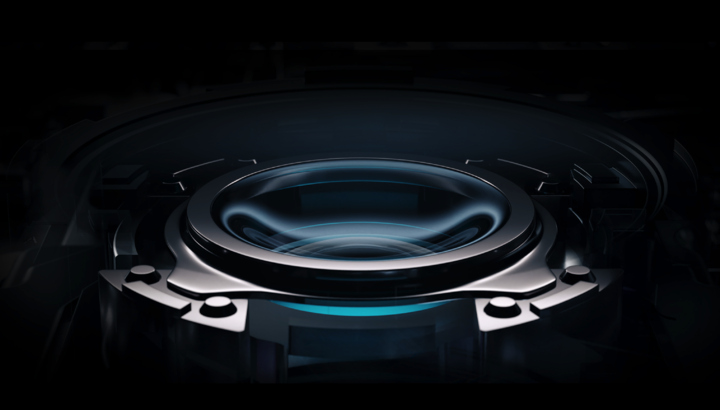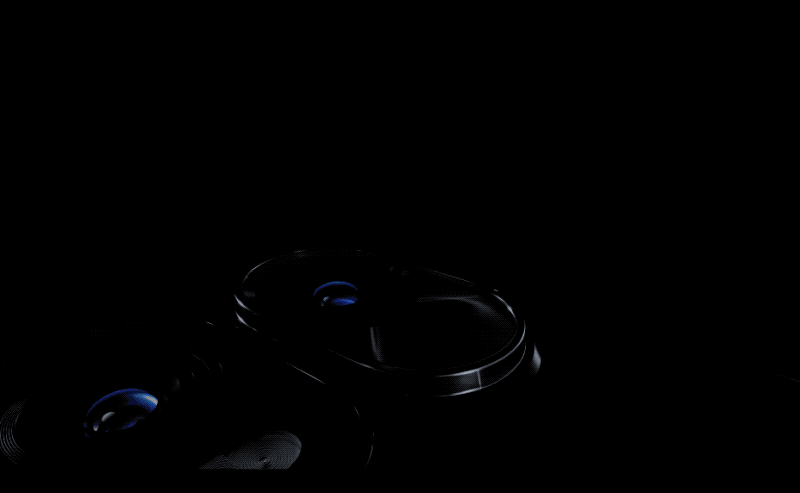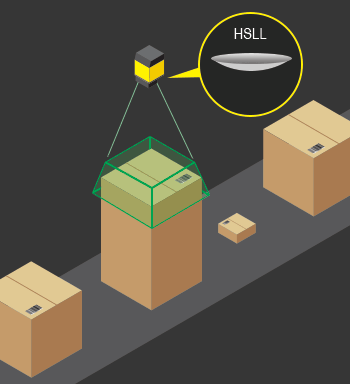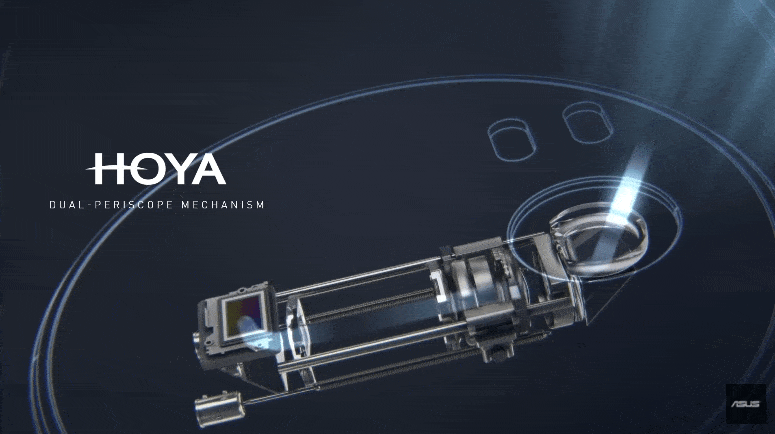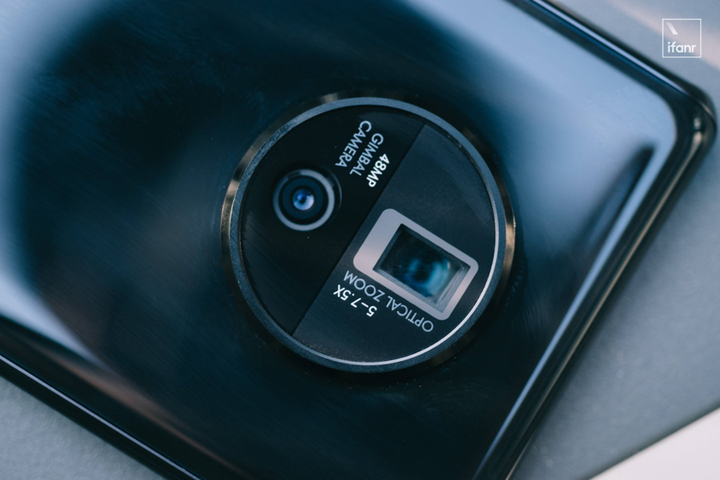Ensure image quality in extreme environments, etc.
MIX FOLD liquid lens close-up. Picture from: Xiaomi
Before the official debut of MIX FOLD, Xiaomi had already released the principle and characteristics of the “liquid lens”. It can be seen from the public information that the liquid lens on MIX FOLD mainly brings one of the biggest advantages, that is, the macro function is integrated into the telephoto lens. While supporting 30x zoom, it has a recent 3cm Focus distance.
Our human eyes are very delicate and have strong focusing ability. Through the control of the ciliary muscles on the lens, we can see very close or very far, but the angle of view remains the same.
The liquid lens on MIX FOLD has the same characteristics as the “human eye”, that is, it can “see close (macro)” or “see far”, but the focal length (angle of view) is not changeable, otherwise the phone lens It’s about to “Nine Nine into One”. Only the transparent fluid wrapped in the film is simulated as a “lens”, and the motor that controls the change of the liquid is similar to the ciliary muscle of the human eye.
After the transparent fluid in the lens receives the pressure of the motor, it can quickly change its shape and determine the focus to complete the focus. This process is theoretically faster and more stable than traditional mechanical devices. The liquid inside the lens, according to the official statement, will have very good light transmittance and resistance to extreme environments. Since energy is produced, there is no need to worry too much about the stability of the “liquid lens”.
The first one in the MIX FOLD camera module is the “liquid lens”. Picture from: Xiaomi
As for the final “curative effect”, I immediately asked Zhijian, who had experienced MIX FOLD on the spot, and he just said that there was no special feeling. And this feeling can be regarded as an affirmation of a new technology. After all, “the real technology makes you unable to feel its existence.” As for whether the focus is faster and the quality is better, you may still have to wait for the true MIX FOLD. The machine has been tested, so stay tuned.
The liquid lens is not a new thing, but it blooms on the moving image
Before the advent of Mi MIX FOLD, some special “liquid lens” industries were quite mature, but they were not related to “images”. They were not used for imaging and shooting, but more for scanning records.
The biggest application scenario of these special lenses is the scanning camera on the conveyor belt of the automatic sorting center of e-commerce. They use the liquid lens to quickly autofocus and the large focus range, which can quickly scan to products of different sizes. The barcode is recorded in the program to facilitate inventory management.
A dynamic auto-focus system responsible for scanning codes on the conveyor belt. Picture from: COGNEX
In addition, liquid lenses are also used in some microscopes to quickly and accurately focus on various object planes.
In general, in industry and some special fields, liquid lenses have been relatively perfect from manufacturing to use, and their principles are not much different from those of Xiaomi’s “liquid lenses”. They are all applied to the film through a motor (current driver). Pressure is applied to the edge of the electrode, which changes the curvature of the electrofluid, and completes the movement of the focus.
A liquid lens that changes the curvature of the electrofluid to focus. Image from: Edmund Optics
However, MIX FOLD is the first and the only one that applies the “liquid lens” to the outsole sensor and the moving image that requires high imaging requirements.
As early as 2010, major imaging manufacturers Canon and Sony have applied for patents similar to “liquid lenses”, but they have not mass-produced or launched corresponding concept products until now. It may be because the “liquid lens” did not achieve the expected imaging after covering the full-frame image field.
Or for a full-frame camera with interchangeable lenses, the macro lens is originally a telephoto lens. The functions of both can be achieved under the original mechanical structure, and there is not much market demand to urge it. They continued to innovate, so the “liquid lens” project was shelved.
On the other hand, in the field of mobile imaging, competition is much fierce. Without continuous innovation, it is difficult to differentiate itself by relying on components and algorithms provided by upstream suppliers, and it is also difficult to gain a foothold in this field. Let alone want to continue to sprint into the high-end market. Perhaps the emergence of “liquid lenses” is just the beginning, and more manufacturers may bring other “tomorrow” technologies in the future.
What’s the significance of the macro and telephoto combo?
The integration of the macro function into other lenses is not the first of Xiaomi MIX FOLD, but their directions are different.
Starting in 2018, a batch of new flagships represented by Huawei Mate20 have cut off the macro lens that was made up by spitting out. Integrate the macro function into the ultra-wide-angle lens.
This does not only rely on software algorithms, but more importantly, the customization at the hardware level, so that the ultra-wide-angle focusing distance can be as close as 2 cm, so as to achieve macro shooting.
Integrating the macro into the ultra-wide-angle lens not only simplifies the rear camera module, but also improves the mobile phone’s ability to shoot macros. High after all0210331/v2_e54b57dc6a0543afaa6f489dbe5330e7_img_000″ data-img-size-val=”720,450″>
Although it achieves continuous zoom, the thickness of the lens module is still controlled within 12mm. The secret lies in the structure of the periscope. ASUS placed the lens module parallel to the fuselage and refracted the scene into the sensor through two sets of prisms, solving the problem of fuselage thickness.
Then use the motor of the lens module to control the back and forth movement of the lens to achieve continuous optical zoom.
This sounds like a great solution. But what about the product experience? Our biggest feeling at the time was the slow imaging speed, high shutter delay, and the picture quality can only be said to be unsatisfactory.
If you put this set of solutions today, perhaps with the blessing of outsole sensors, more advanced SoCs, and computational photography, the problem of image quality can be effectively solved. It can be said that it was born in the wrong era.
It is worth mentioning that the shortest focusing distance of this phone at the wide-angle end is 5cm, and when using the telephoto end, the shortest focusing distance is 30 cm. If liquid lens technology can be applied, perhaps it can also achieve 5cm macro shooting at the telephoto end.
Similar to the ASUS ZenFone Zoom solution, vivo has brought a lens that can achieve 5-7.5x optical zoom on APEX 2020. It has built-in two-group fixed and two-group movable “four-group lens combination” to ensure high image quality under continuous zoom.
In order to achieve a body thickness of 8.8mm, the battery capacity of APEX 2020 is only 2000mAh. It can be seen that continuous lightThe size of the zoom lens module makes it difficult to apply it on a large scale.
APEX 2020 zoom experience
In June last year, OFILM announced that it had developed the thinnest periscope continuous zoom module in history. The thickness is only 5.9 mm.
The lens of this module is composed of 3 groups of “1GMO6P”, the equivalent focal length reaches 85-170 mm, and the aperture is F3.1-5.1. If the focal length of the main camera is 28mm, this lens is equivalent to a continuous optical zoom of 3-7 times.
However, there are still many ways to go if you want the periscope zoom module to be applied to mobile phones on a large scale. Such as imaging quality, difficulty of assembly, cost and so on.
But this kind of plan is still looking forward to. Perhaps in the near future, we can see a mobile phone equipped with a liquid lens + periscope zoom module. When the two “black technologies” are combined, a new world will usher in the back of the phone.
